Opinion & Analysis
We’re in a struggle for the collective soul of golf

Once upon a time, being The Club Champion was a position of some distinction, and being known as a “scratch golfer,” or one of the very best players at any golf club, was an honor that carried a little more reverence than it does today. For a long, long time, most clubs in this world regarded The Club Championship as their premier event, an eagerly anticipated annual occasion where many would line the fairways to watch their club’s best golfers square off in the culmination of a quest to be crowned the champion golfer of the year. It was a great tradition, one each club’s best players planned their golfing year around. It’s the reason why most clubs (even today) hold their championships well into their season: to give golfers ample time to round into form, providing the best opportunity for an exciting event for both competitor and spectator alike.
“Infinite striving to be the best is man’s duty; it is its own reward.”
– Mahatma Gandhi
Yes, once upon a time we respected and revered the best among us, and at least partly because of that, many more of us annually aspired to join their ranks. Unfortunately, we just don’t seem to do that as much anymore. At some point in the last century, there began a slow, but steady erosion of this long-standing tradition, and The Club Championship lost its place as most club’s preeminent tournament to handicapped events like invitationals and qualifiers, where players of varied abilities could team up for a shot at each club’s biggest prize. And as this tradition lost its relevance, a great many of us seemingly lost the desire, determination, and motivation to do the hard work it takes to embark upon that annual quest to be the best. So before this tradition completely fades from memory, I think it’s time to solve the riddle of just how, when and why this has occurred, and what we can all do if we want to go back to that place. To get there, I believe first a little golf history is in order.
The Scots are historically given credit for inventing the game of golf. A lesser-known fact, though, is that they also likely invented the precursor to the modern handicap system. Assigning the odds is what the Scots called the practice of handicapping, and the adjustor of the odds was the person who most closely resembled our modern-day handicap chairman. Their earliest attempts at handicapping golf events, however, didn’t benefit the competitors, but rather the bettors. As a result, the Scots and their nearly insatiable appetite for a wager unknowingly created a monster.
Even more so than today, it was not uncommon back then for there to be two or three golfers of exceeding ability playing in each club’s tournament, but the Scots endeavored to bring more horses into the field, and handicapping the competitors increased the number of individuals that one might bet upon, and subsequently increased the total of bettors and money in the betting pools. The natural progression of this, of course, was the idea of conducting tournaments where players would be given a certain allowance of strokes in order to compete against players of greater or lesser ability. All this aside, and even taking into consideration the rise of a unified handicap system in England during the late 1800s, the Club Tournament (played at scratch), or Club Championship, as it is more commonly called today, remained the preeminent annual event at most golf clubs around the world until the latter half of the 20th century.
So why and at what point did being the best golfer at any given club become an honor that fewer and fewer golfers annually strove to attain? Is there one thing or a host of things that have together conspired to facilitate a detour along the road to self-improvement and our collective desire to not only be the best, but to also appreciate the efforts of those who do? Fingers may be pointed in a handful of directions, but in the end, I think there is a single culprit that rises above the rest when it comes to our having settled into this comfort zone of the commonplace. First, let’s take a look at those things I believe, at best, are merely contributory.
There are some who might point to equipment and instruction as having failed the masses, but nothing is likely further from the truth. Quality golf instruction has never been cheaper or more widely available. Whether it’s on the Golf Channel or the internet, the best instructors in the game are literally lining up each and every day to offer free advice. Prefer a more personal approach? With close to two qualified PGA or LPGA instructors per facility on average in the U.S., it’s truly a stretch to cast the blame in that direction. And vast improvements in equipment over the past few decades, as well as the emergence of a huge and affordable second-hand market via the internet have made hitting the ball cheaper and easier than ever, while leaving little excuse for the average golfer to not have good clubs that fit properly. So in the end, I believe these are the least likely reasons that we have for our acceptance of being average.
A case can be made for the rise in coverage of professional golf events after the advent of television some 50+ years ago. We can now marvel at the talent and ability of elite golfers from around the globe almost 24/7 via TV or the internet. These are golfers who, to an extent, can make our local champions look far more pedestrian by comparison. This argument, however, is thin at best and only takes into account half of our conundrum, the drop in admiration we may feel for local champions, while failing to address the other side of the equation. With the abundance of virtual access we have to the very best players, and the even larger scale celebrity (and compensation) they are now rewarded with for displaying elite skills, you could just as easily argue their influence upon our desire to play the game at a higher level is even greater than those local champions we long admired for their ability to simply best the best among us.
Is it the sandbaggers? Sure, at one point or another, we’ve all become tired of losing to bandits who’ve managed to acquire an allowance of strokes that seemingly exceeds their ability. That so-called level playing field the handicap system was designed to provide can often feel like it’s tilted in favor of the less honorable among us, but so much so that we have en masse adopted the mentality, if you can’t beat ‘em, join ‘em? Well, I hope not, but just in case it’s notoriety you’ve been shooting for, let me be the first to break a little bad news. There is no honor in being infamous, and there are no books being written, movies being made, nor legends being told about Joe Bogey, the best 18-handicapper who ever lived.
So if it isn’t the instructors, the equipment, the prevalence of better golfers being broadcast, or even the sandbaggers, where exactly can we point the finger of blame for our long slow descent into comfortable mediocrity? Well, let me give you my theory, and what I hope we will all consider so that we can at least begin to walk things back a bit. You’re free to disagree, of course, but if you, like me, believe our game has somehow, at some point, taken a wrong turn, it just might offer a bit of direction for how we can find the way back.
The game of golf in and of itself is not always fair. Just like life, there are bad bounces and breaks that we all suffer, while fortune and her golfing mistress, The Member’s Bounce, often smile upon those we deem the least worthy among us. We struggle to improve, while others can seemingly make this incredibly difficult game look easy with what we perceive as little comparative effort. Fair or not, that’s just life. At the same time, the goal of the handicap system is to facilitate fair competition among players of every ability. It mostly does that. Inadvertently, however, this leveling of the playing field — and the opportunity it affords players of all skill levels to win what we now consider our club’s most prestigious events — may have robbed us of what was long our biggest incentive to improve. And while we often bemoan the creeping pervasiveness of policies of “fairness,” in everything from politics to athletics, insisting everyone should earn their fair share (or their trophy), we mostly continue to lean on our handicaps when it comes time to compete. Is all that moaning and complaining just talk?
Most club champions work hard on their games, play to scratch, and are consequently some of the finest amateur players in their respective areas. They typically compete beyond the local level, often testing their mettle in high-profile amateur events against other players of similar abilities and on other courses. Despite all that, how many of you out there reading this would even recognize your club’s own champion if he or she were hitting balls next to you on the driving range? Better yet, how many of you are honing your skills as we speak so that you will be ready to answer the bell when it comes time to challenge him or her for that title this year? Anyone?
So this is my call to arms (or irons, if I may), because whether we realize it or not, we’re in a struggle for the collective soul of our game. Will we fight, or fold up our competitive tents and crawl back under the warm blanket of low expectations? Have we become so addicted to our allowance of strokes that we no longer entertain the idea of ultimately playing without them? I’m not suggesting we do away with handicaps, they serve a purpose, but could they be responsible for at least some of us falling into the habit of settling for smaller victories that could and maybe should be viewed as mere stepping stones? Let’s hope not, but we’ve at least wandered far enough down that path that it’s time to reassert the values of self-improvement and a greater appreciation for the practice. Because, as Gandhi said, if “infinite striving to be the best” is really man’s duty, then it’s time we start walking all that talk. And if it really “is its own reward,” let’s not use the Bandits, the Baggers, or even that infamous Joe Bogey as excuses for not pursuing it.
Vince Lombardi once said, “The only place that success comes before hard work is in the dictionary.” So it’s time to dust off that shag bag, file those wedges, and head to that lonely place called the practice tee. Because whether it’s golf, education, business, or anything else truly important to us in life, success and being considered the best are things that should be earned, and the surest path to them runs through hard work.
Obviously, being your club’s next Club Champion isn’t a goal that’s realistically on everyone’s radar this year. But that doesn’t mean we can’t all at least commit to some small goal of self-betterment, while promising anew to value and appreciate the efforts of those for whom it is. And if we do, we might just find ourselves having turned back the clock to a time when The Club Championship held it’s rightful place among each club’s traditions, and a place where we all used our handicaps as more of a measuring stick of our improvement, rather than a convenient excuse for not seeking to.
See you on the practice tee.
- LIKE129
- LEGIT33
- WOW3
- LOL2
- IDHT0
- FLOP10
- OB8
- SHANK61
Opinion & Analysis
The Wedge Guy: What really makes a wedge work? Part 1
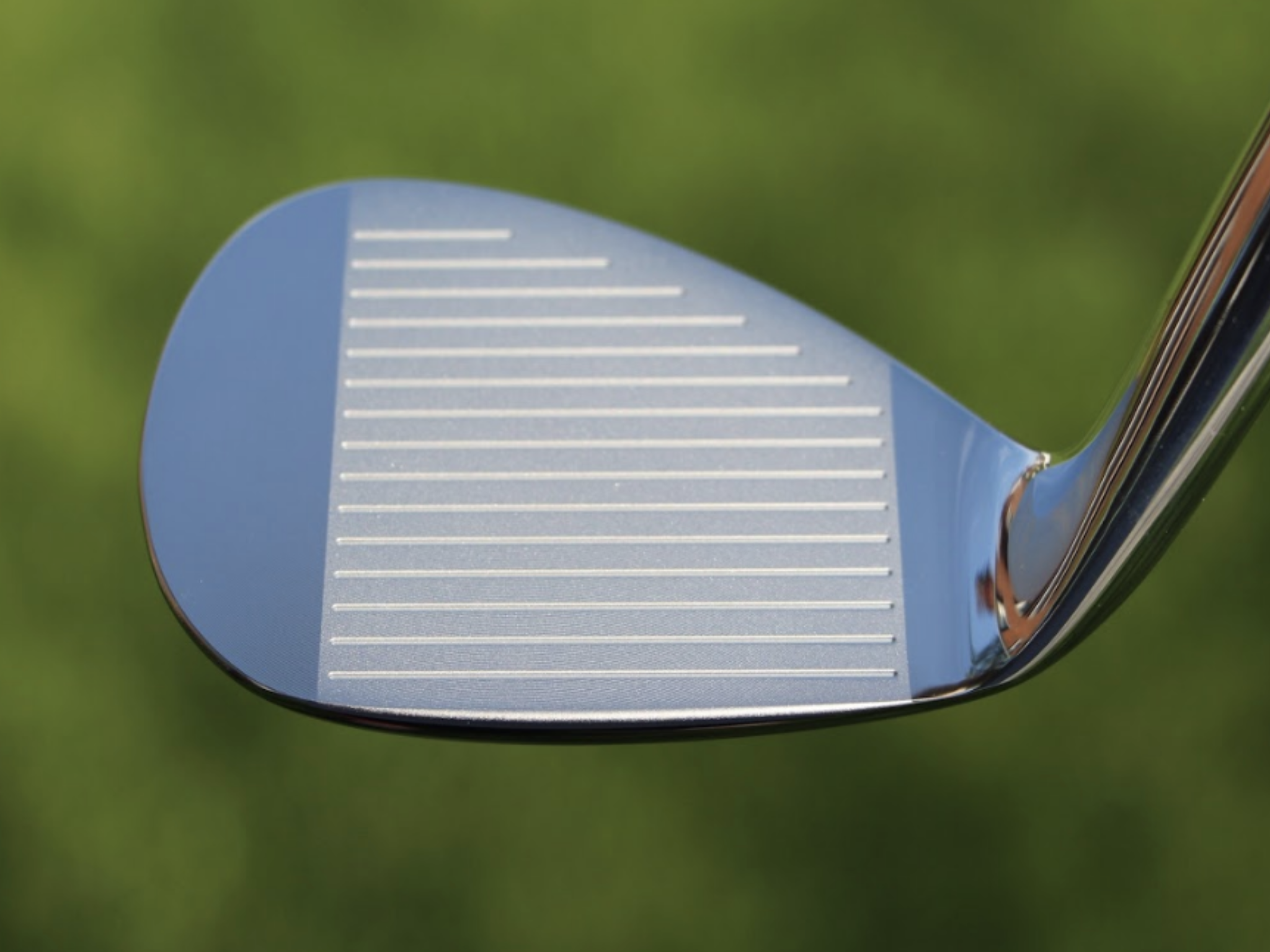
Of all the clubs in our bags, wedges are almost always the simplest in construction and, therefore, the easiest to analyze what might make one work differently from another if you know what to look for.
Wedges are a lot less mysterious than drivers, of course, as the major brands are working with a lot of “pixie dust” inside these modern marvels. That’s carrying over more to irons now, with so many new models featuring internal multi-material technologies, and almost all of them having a “badge” or insert in the back to allow more complex graphics while hiding the actual distribution of mass.
But when it comes to wedges, most on the market today are still single pieces of molded steel, either cast or forged into that shape. So, if you look closely at where the mass is distributed, it’s pretty clear how that wedge is going to perform.
To start, because of their wider soles, the majority of the mass of almost any wedge is along the bottom third of the clubhead. So, the best wedge shots are always those hit between the 2nd and 5th grooves so that more mass is directly behind that impact. Elite tour professionals practice incessantly to learn to do that consistently, wearing out a spot about the size of a penny right there. If impact moves higher than that, the face is dramatically thinner, so smash factor is compromised significantly, which reduces the overall distance the ball will fly.
Every one of us, tour players included, knows that maddening shot that we feel a bit high on the face and it doesn’t go anywhere, it’s not your fault.
If your wedges show a wear pattern the size of a silver dollar, and centered above the 3rd or 4th groove, you are not getting anywhere near the same performance from shot to shot. Robot testing proves impact even two to three grooves higher in the face can cause distance loss of up to 35 to 55 feet with modern ‘tour design’ wedges.
In addition, as impact moves above the center of mass, the golf club principle of gear effect causes the ball to fly higher with less spin. Think of modern drivers for a minute. The “holy grail” of driving is high launch and low spin, and the driver engineers are pulling out all stops to get the mass as low in the clubhead as possible to optimize this combination.
Where is all the mass in your wedges? Low. So, disregarding the higher lofts, wedges “want” to launch the ball high with low spin – exactly the opposite of what good wedge play requires penetrating ball flight with high spin.
While almost all major brand wedges have begun putting a tiny bit more thickness in the top portion of the clubhead, conventional and modern ‘tour design’ wedges perform pretty much like they always have. Elite players learn to hit those crisp, spinny penetrating wedge shots by spending lots of practice time learning to consistently make contact low in the face.
So, what about grooves and face texture?
Grooves on any club can only do so much, and no one has any material advantage here. The USGA tightly defines what we manufacturers can do with grooves and face texture, and modern manufacturing techniques allow all of us to push those limits ever closer. And we all do. End of story.
Then there’s the topic of bounce and grinds, the most complex and confusing part of the wedge formula. Many top brands offer a complex array of sole configurations, all of them admittedly specialized to a particular kind of lie or turf conditions, and/or a particular divot pattern.
But if you don’t play the same turf all the time, and make the same size divot on every swing, how would you ever figure this out?
The only way is to take any wedge you are considering and play it a few rounds, hitting all the shots you face and observing the results. There’s simply no other way.
So, hopefully this will inspire a lively conversation in our comments section, and I’ll chime in to answer any questions you might have.
And next week, I’ll dive into the rest of the wedge formula. Yes, shafts, grips and specifications are essential, too.
- LIKE0
- LEGIT0
- WOW0
- LOL0
- IDHT0
- FLOP0
- OB0
- SHANK0
Golf's Perfect Imperfections
Golf’s Perfect Imperfections: Amazing Session with Performance Coach Savannah Meyer-Clement

In this week’s episode, we spent some time with performance coach Savannah Meyer-Clement who provides many useful insights that you’ll be able to implement on the golf course.
- LIKE0
- LEGIT0
- WOW0
- LOL0
- IDHT0
- FLOP0
- OB0
- SHANK0
19th Hole
Vincenzi’s 2024 RBC Heritage betting preview: Patrick Cantlay ready to get back inside winner’s circle

Just a two-hour drive from Augusta National, the PGA TOUR heads to Harbour Town Golf Links in Hilton Head Island, S.C. Hilton Head Island is a golfer’s paradise and Harbour Town is one of the most beautiful and scenic courses on the PGA TOUR.
Harbour Town Golf Links is a par-71 that measures 7,121 yards and features Bermuda grass greens. A Pete Dye design, the course is heavily tree lined and features small greens and many dog legs, protecting it from “bomb-and-gauge” type golfers.
The field is loaded this week with 69 golfers with no cut. Last year was quite possibly the best field in RBC Heritage history and the event this week is yet another designated event, meaning there is a $20 million prize pool.
Most of the big names on the PGA Tour will be in attendance this week with the exceptions of Hideki Matsuyama and Viktor Hovland. Additionally, Webb Simpson, Shane Lowry, Gary Woodland and Kevin Kisner have been granted sponsors exemptions.
Past Winners at Harbour Town
- 2023: Matt Fitzpatrick (-17)
- 2022: Jordan Spieth (-13)
- 2021: Stewart Cink (-19)
- 2020: Webb Simpson (-22)
- 2019: CT Pan (-12)
- 2018: Sotoshi Kodaira (-12)
- 2017: Wesley Bryan (-13)
- 2016: Branden Grace (-9)
- 2015: Jim Furyk (-18)
In this article and going forward, I’ll be using the Rabbit Hole by Betsperts Golf data engine to develop my custom model. If you want to build your own model or check out all of the detailed stats, you can sign up using promo code: MATTVIN for 25% off any subscription package (yearly is best value).
Key Stats For Harbour Town
Let’s take a look at key metrics for Harbour Town Golf Links to determine which golfers boast top marks in each category over their past 24 rounds.
Strokes Gained: Approach
Strokes Gained: Approach is exceedingly important this week. The greens at Harbour Town are about half the size of PGA TOUR average and feature the second-smallest greens on the tour. Typical of a Pete Dye design, golfers will pay the price for missed greens.
Total SG: Approach Over Past 24 Rounds
- Scottie Scheffler (+1.27)
- Tom Hoge (+1.27)
- Corey Conners (+1.16)
- Austin Eckroat (+0.95)
- Cameron Young (+0.93)
Good Drive %
The fairways at Harbour Town are tree lined and feature many dog legs. Bombers tend to struggle at the course because it forces layups and doesn’t allow long drivers to overpower it. Accuracy is far more important than power.
Good Drive % Over Past 24 Rounds
- Brice Garnett (88.8%)
- Shane Lowry (+87.2%)
- Akshay Bhatia (+86.0%)
- Si Woo Kim (+85.8%)
- Sepp Straka (+85.1%)
Strokes Gained: Total at Pete Dye Designs
Pete Dye specialists tend to play very well at Harbour Town. Si Woo Kim, Matt Kuchar, Jim Furyk and Webb Simpson are all Pete Dye specialists who have had great success here. It is likely we see some more specialists near the top of the leaderboard this week.
SG: TOT Pete Dye per round over past 36 rounds:
- Xander Schauffele (+2.27)
- Scottie Scheffler (+2.24)
- Ludvig Aberg (+2.11)
- Brian Harman (+1.89)
- Sungjae Im (+1.58)
4. Strokes Gained: Short Game (Bermuda)
Strokes Gained: Short Game factors in both around the green and putting. With many green-side bunkers and tricky green complexes, both statistics will be important. Past winners — such as Jim Furyk, Wes Bryan and Webb Simpson — highlight how crucial the short game skill set is around Harbour Town.
SG: SG Over Past 24 Rounds
- Jordan Spieth (+1.11)
- Taylor Moore (+1.02)
- Wyndham Clark (+0.98)
- Mackenzie Hughes (+0.86)
- Andrew Putnam (+0.83)
5. Greens in Regulation %
The recipe for success at Harbour Town Golf Links is hitting fairways and greens. Missing either will prove to be consequential — golfers must be in total control of the ball to win.
Greens in Regulation % over past 24 rounds:
- Brice Garnett (+75.0%)
- Scottie Scheffler (+69.9%)
- Corey Conners (+69.0%)
- Shane Lowry (+68.3%)
- Patrick Rodgers (+67.6%)
6. Course History
Harbour Town is a course where players who have strong past results at the course always tend to pop up.
Course History over past 24 rounds:
- Patrick Cantlay (+2.34)
- Cam Davis (+2.05)
- J.T. Poston (+1.69)
- Justin Rose (+1.68)
- Tommy Fleetwood (+1.59)
The RBC Heritage Model Rankings
Below, I’ve compiled overall model rankings using a combination of the five key statistical categories previously discussed — SG: Approach (24%), Good Drives (20%), SG: SG (14%), SG: Pete Dye (14%), GIR (14%), and Course History (14%)
- Shane Lowry
- Russell Henley
- Scottie Scheffler
- Xander Schauffele
- Corey Conners
- Wyndham Clark
- Christiaan Bezuidenhout
- Matt Fitzpatrick
- Cameron Young
- Ludvig Aberg
2024 RBC Heritage Picks
Patrick Cantlay +2000 (FanDuel)
With the exception of Scottie Scheffler, the PGA Tour has yet to have any of their star players show peak form during the 2024 season. Last week, Patrick Cantlay, who I believe is a top-5 players on the PGA Tour, took one step closer to regaining the form that’s helped him win eight events on Tour since 2017.
Cantlay limped into the Masters in poor form, but figured it out at Augusta National, finishing in a tie for 20th and ranking 17th for the week in Strokes Gained: Ball Striking. The former FedEx Cup champion will now head to one of his favorite golf courses in Harbour Town, where he’s had immaculate results over the years. In his six trips to the course, he’s only finished worse than 7th one time. The other finishes include three third places (2017, 2019, 2023) and one runner-up finish (2022). In his past 36 rounds at Harbour Town, Cantlay ranks 1st in Strokes Gained: Total per round at the course by a wide margin (+2.36).
Cantlay is winless since the 2022 BMW Championship, which is far too long for a player of his caliber. With signs pointing to the 32-year-old returning to form, a “signature event” at Harbour Town is just what he needs to get back on the winning track.
Tommy Fleetwood +3000 (FanDuel)
I truly believe Tommy Fleetwood will figure out a way to win on American soil in 2024. It’s certainly been a bugaboo for him throughout his career, but he is simply too talented to go another season without winning a PGA Tour event.
At last week’s Masters Tournament, Fleetwood made a Sunday charge and ended up finishing T3 in the event, which was his best ever finish at The Masters. For the week, the Englishman ranked 8th in the field in Strokes Gained: Approach, 10th in Strokes Gained: Ball Striking and 16th in Strokes Gained: Putting.
Harbour Town is a perfect layout for Fleetwood, and he’s had relative success at this Pete Dye design in the past. In his four trips to the course, he’s finished inside of the top 25 three times, with his best finish, T10, coming in 2022. The course is pretty short and can’t be overpowered, which gives an advantage to more accurate players such as Fleetwood. Tommy ranks 8th in the field in Good Drive % and should be able to plot his way along this golf course.
The win is coming for Tommy lad. I believe there’s a chance this treasure of a golf course may be the perfect one for him to finally break through on Tour.
Cameron Young +3300 (FanDuel)
Cameron Young had a solid Masters Tournament last week, which is exactly what I’m looking for in players who I anticipate playing well this week at the RBC Heritage. He finished in a tie for 9th, but never felt the pressure of contending in the event. For the week, Young ranked 6th in Strokes Gained: Off the Tee and 6th in Strokes Gained: Ball Striking.
Despite being one of the longest players off the tee on the PGA Tour, Young has actually played some really good golf on shorter tracks. He finished T3 at Harbour Town in 2023 and ranks 20th in the field in Good Drive% and 16th in Greens in Regulation in his past 24 rounds. He also has strong finishes at other shorter courses that can take driver out of a players hand such as Copperhead and PGA National.
Young is simply one of the best players on the PGA Tour in 2024, and I strongly believe has what it takes to win a PGA Tour event in the very near future.
Corey Conners +5500 (FanDuel)
Corey Conners has had a disappointing year thus far on the PGA Tour, but absolutely loves Harbour Town.
At last week’s Masters Tournament, the Canadian finished T30 but ranked 20th in the field in Strokes Gained: Approach. In his past 24 rounds, Conners ranks 3rd in the field in Strokes Gained: Approach, 3rd in Greens in Regulation % and 24th in Good Drive %.
In Conners’ last four trips to Harbour Town, his worst finish was T31, last season. He finished T4 in 2021, T12 in 2022 and ranks 8th in Strokes Gained: Total at the course over his past 36 rounds.
Conners hasn’t been contending, but his recent finishes have been encouraging as he has finished in the top-25 in each of his past three starts prior to The Masters, including an impressive T13 at The PLAYERS. His recent improvement in ball striking as well as his suitability for Harbour Town makes Conners a high upside bet this week.
Shane Lowry (+7500) (FanDuel)
When these odds were posted after Lowry was announced in the field, I have to admit I was pretty stunned. Despite not offering much win equity on the PGA Tour over the last handful of years, Shane Lowry is still a top caliber player who has the ability to rise to the top of a signature event.
Lowry struggled to score at The Masters last week, but he actually hit the ball really well. The Irishman ranked 1st for Strokes Gained: Approach on the week and 7th in Strokes Gained: Ball Striking. As usual, it was the putter that let him down, as he ranked 60th in the field in Strokes Gained: Putting.
Harbour Town is most definitely one of Lowry’s favorite courses on the PGA Tour. In his six starts there, he’s finished in the top 10 three times, including third twice. Lowry is sensational at Pete Dye designs and ranks 7th in Strokes Gained: Total in his past 36 rounds on Dye tracks.
Lowry is perfect for Harbour Town. In his past 24 rounds, he ranks 5th in Strokes Gained: Approach, 2nd in Good Drive% and 5th in Green in Regulation %. If he figures it out on the greens, Shane could have his first win in America since 2015.
Lucas Glover +12000 (FanDuel)
This is one of my weekly “bet the number” plays as I strongly believe the odds are just too long for a player of Glover’s caliber. The odds have been too long on Glover for a few weeks now, but this is the first event that I can get behind the veteran being able to actually contend at.
Glover is quietly playing good golf and returning to the form he had after the understandable regression after his two massive victories at the end of 2023. He finished T20 at The Masters, which was his best ever finish at Augusta National. For the week, Lucas ranked 18th for Strokes Gained: Approach and 20th in Strokes Gained: Ball Striking.
Over his past 24 rounds, Glover ranks 9th in Strokes Gained: Approach and 13th in Good Drive %. Harbour Town is a short course that the 44-year-old will be able to keep up with the top players on Tour off the tee. He’s played the course more than 20 times, with mixed results. His best finishes at Harbour Town include a T7 in 2008, but recently has a finish of T21 in 2020.
Glover has proven he can contend with the stars of the Tour on any given week, and this number is flat out disrespectful.
- LIKE30
- LEGIT5
- WOW1
- LOL1
- IDHT1
- FLOP2
- OB0
- SHANK2
-

 19th Hole1 week ago
19th Hole1 week agoDave Portnoy places monstrous outright bet for the 2024 Masters
-
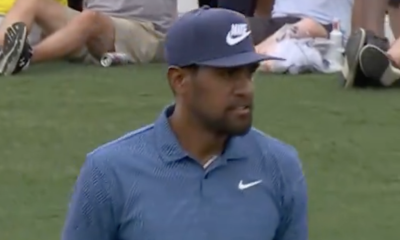
 19th Hole2 weeks ago
19th Hole2 weeks agoThings got heated at the Houston Open between Tony Finau and Alejandro Tosti. Here’s why
-

 19th Hole1 week ago
19th Hole1 week agoTiger Woods arrives at 2024 Masters equipped with a putter that may surprise you
-

 19th Hole2 weeks ago
19th Hole2 weeks agoReport: Tiger Woods has ‘eliminated sex’ in preparation for the 2024 Masters
-

 19th Hole4 days ago
19th Hole4 days agoTwo star names reportedly blanked Jon Rahm all week at the Masters
-

 19th Hole3 days ago
19th Hole3 days agoNeal Shipley presser ends in awkward fashion after reporter claims Tiger handed him note on 8th fairway
-

 19th Hole2 days ago
19th Hole2 days agoReport: LIV Golf identifies latest star name they hope to sign to breakaway tour
-
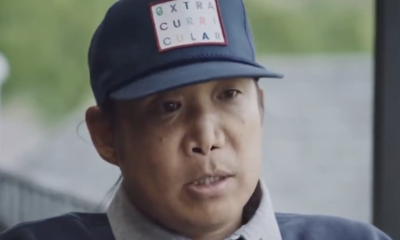
 19th Hole2 weeks ago
19th Hole2 weeks agoAddiction, spinal fusion, and scam artists – Everything Anthony Kim revealed in candid interview with David Feherty











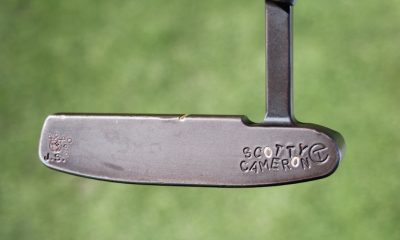

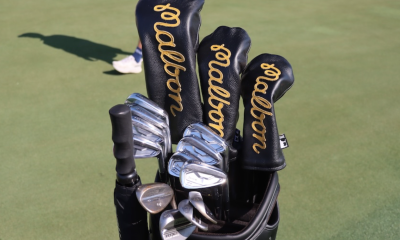



Pingback: The Mystery Behind the Mulligan
Pingback: The Mystery Behind the Mulligan - Dan Hansen Golf Instruction
Matt
Jun 10, 2016 at 6:42 am
The weekend warrior jock fitness thing starting in the ’80’s combined with the neo-liberal era and downfall of heros like TW is slowing down golf as a popular pastime. I don’t mind this happening because the way the game is portrayed and marketed now is pretty dull (distance, power and having the latest gear). Perhaps if it is once again known as a ‘f#%k yeah’ desirable sport comprising history, commitment, skill, finesse, manners and style…
Dale Doback
Jun 8, 2016 at 8:00 am
I would love to play in a club championship were the best player or player who played the best won. The problem is the flawed handicapping system. My club championship uses the handicapping system and then has the players play match play format. This does not produce the best player. At least when I play on the golf channel amtour events when a player has 3 events played their tournament index overrides their handicap to keep players from sandbagging.
mike dowd
Jun 8, 2016 at 12:14 pm
Dale, I have used tournament handicaps exclusively in our events for the past 15 years and it really works well when it comes to dealing with the sandbagging issue. Allowing players to play and post their own scores in what are mostly casual rounds of golf, whether it be at the club, or form the internet in the comfort of your own home and then to use those handicaps in competition really opens up the door for the less honorable among us. It is essentially like asking each player what handicap they would like to play to that day when they check in for a tournament. We need handicaps, but we really need to re-evaluate system wide the types of scores that we allow to be counted as part of a competitive handicap and how they are monitored. That, however, is an article for another day. 🙂
Alex
Jun 7, 2016 at 11:29 am
When I was a kid the Club Championship was the time of the year everybody was waiting for. The kids who wanted to make it to the finals, the hackers who wanted to see the great amateurs hitting the shots. The final match was and still is 36 holes on Sunday. Back then the course was shut so that people came up to follow the match. Dozens of people gathered.
These days, only the format remains, and simply the best players care about it.
True, the ambitious ones got prepared for the Club Championship, and we improved our golf in trying to do so and also imitating the few great players of our club.
Anyway, I don’t want to sound sentimental, God Bless the Handicap.
Ron
Jun 6, 2016 at 6:14 pm
The point of the article, if I understood it, was less about club championships and more about the value associated with one’s own personal improvement in the game and the dedication needed to accomplish that – even when that does not lead to a championship.
The handicapping system is immensely clever – as a way of tracking one’s own skill level. And it allows golfers of different skill levels to have a friendly competition – and in that way is also brilliant. But if all tournaments in a club are net score or net team play, there is less incentive to work at improving if lowering one’s handicap makes a player less likely to be successful in those net competitions (it’s hard for a single digit to compete against a field of 18s). But courses and clubs want to have high participation in their tournaments in order to increase play or the size of the pot – so there has to be an incentive that will draw a lot of players. Hence the team tournaments, net tournaments, skins tournaments, etc., where more participants have a chance to win something. I used to play my County Senior Amateur – but only in the gross division, knowing that as a four or five handicap, I was not going to win (after all, I was in grad school when some of those guys were born!). But I could be in the mix if I played well, and that was satisfying and gave me an incentive to work on my game as the tournament approached. But it is no longer being held, as the local county courses decided they did not draw enough players to warrant hosting the tournament. So now I just work on my game a lot – and I now have the time to do that – in order to continue to improve, or at least stave off what I suspect will (eventually) become a steady decline in my skills as time goes on. I’ll never be a club champion, or County Am winner – but that’s okay.
Mike Dowd
Jun 6, 2016 at 4:08 pm
In truth, you can never really go back, but I think a trip down memory lane once in a while helps us to remember things we actually value, but may have lost sight of for one reason or another. Investing in self-improvement, regardless of where we are on the handicap scale or whatever other scale we are using to measure ourselves is something that helps keep us engaged, enthusiastic, and enjoying whatever it is we are trying to get better at even more. Being stuck and feeling stagnated by being in the same place, whether it be at the same handicap or the same level of anything, is what ends up leaving people frustrated enough to quit, whether it’s golf or something else. I think that, despite the fact that I used the club championship and scratch golfers as my example, my point of re-connecting to the values of self-improvement is far from elitist and is actually most applicable to those who have the most ability to improve. I chair the PGA’s Growth of the Game Committee and have been working to grow the game for years and one of the biggest reasons people continually cite for leaving golf is the fact that they felt like they weren’t getting any better. As professionals I think we need to not just be involved in that process, but be just as involved with motivating people to want to, and part of that is helping to create a culture that values it. I know, obviously, that not everyone can become the club champion, but if at least at some level we stay continually engaged in the process of doing even small things that help us to get a little better I think we will continue to enjoy this great game even more than if we resign ourselves to that fact that we are as good as we’re ever going be. Call me the eternal optimist, or a peddler of hope, but I think that hope and the fact that we haven’t yet reached the mountain top is at least a part of what keeps us coming back.
ca1879
Jun 6, 2016 at 1:57 pm
Could it be that the vast majority of players, who have no chance of winning or performing well in the club championship no matter how many hours we spend practicing, have grown tired of providing the bulk of the money and time that it takes to support the competitive portion of a club and it’s tournaments? I play at my club for the camaraderie and events that we put on, and figuring out who is the best player this year is of vanishingly little importance to me. Our pros and the handful of players that play near scratch think it’s important, the other 90% of us are more interested in finding out how to have more fun. It’s funny that in the face of the decline of the game, you would suggest that the very competitive elitism that has partially created it is somehow going to become the road back. That seems very unlikely.
Nick
Jun 6, 2016 at 2:15 pm
Your first line is exactly the attitude being discussed. Why do you think so little of your/others ability to improve at the game?
Nick
Jun 6, 2016 at 2:18 pm
Why do you think so little of yours/others ability to get better at the game? I think that mind set is what a lot of people are seeing.
Ryan
Jun 30, 2016 at 1:03 pm
That’s exactly how I felt when I couldn’t break 100, about 5 or 6 years ago. I still felt that way when I broke 100, but couldn’t break 90. I even jumped on 15-inch cup bandwagon for a little while. I am now a 4-hdcp, and I don’t say that to brag, but I’ve worked hard to get where I am. I say that to say that I believe anyone and everyone can do it. I know, and play with, guys with your same attitude. They say they CAN’T get better, and use it as an excuse to not work hard to try and get better. Don’t blame the 10% who work their tails off on the lazy 90%. Don’t worry, we’ll get you a participation trophy in the next tournament, but don’t bring down everyone else, and keep your playing partners from thinking they can ever improve.
mike dowd
Jun 6, 2016 at 11:33 am
Love all the great comments here, most of which are all contributory factors. Family, the time commitment it takes to be a really good golfer, and changes in society that make it not near as acceptable for most guys to work all week and disappear to the club to work on their golf games all weekend have all played a role. At the same time, unfortunately, and I think my ultimate point was that the largest portion of competitive golfers I see these days are more worried about working on their handicaps than they are about working on their golf games and the types of events that we seem to most value these days only makes that problem worse. Playing best balls and scrambles are in truth quite fun, but they also open the door to situations where players are rewarded for having a handful of good holes or shots, without really being penalized much for having bad holes or shots. This not only contributes to the issue of sandbagging, but places little value on playing consistently good golf. You’re a much better teammate if you carry an 18 handicap and can par or birdie 6 or 8 holes, regardless of what you do on the others, than you are if you are a scratch golfer who makes two or three birdies per round off-set by two or three bogies. Think about it, in most club-level events these days, it’s almost a penalty to have a partner or teammate that is a really low handicapper, but that 12 to 18 handicapper who can shoot in the low to mid eighties occasionally is a hot commodity. Golf is the greatest game, and the fact that via the handicap system we can have relatively fair competition between players of all abilities is one of the greatest things about it. You can’t handicap a tennis match or just about any other sport and make it fair or fun for either player. If we don’t, however, find some ways to start re-asserting the value of being a better golfer at the club level, and of bringing those who are back into the fold in some may, we may wake up one day and find that very few people will even care to be one anymore. And that, I think, will be the biggest shame.
Other Paul
Jun 6, 2016 at 9:47 pm
I dont officially track a handicap. My average score is 84-86. I shot 39 on 9 last night. Left my driver in the bag.
Joe Perez
Jun 6, 2016 at 10:36 am
I’m one of the officers of the Seniors Club at our local muni. Every time I’ve tried to advance the idea of having the results of our club championship crown *two* champions, a net-handicap champion and another with no handicap strokes given, I’m rebuffed.
Our club does not award cash prizes for the club championship, and I doubt the trophy costs the club more than $10, and yet for years we’ve had net-handicap champions who are known to all for their sandbagging practices. A lot of the old folks in our club just aren’t able to endure long practice sessions, so in my case I think it just comes down to people who don’t want to admit that they simply no longer have what it takes.
Scott
Jun 6, 2016 at 10:07 am
Everyone’s comments are great. At my club, the championship takes place over 2 weekends, if you make it to the finals. It takes place in mid July, which is prime family vacation time. That is a lot of time to commit, with other family commitments. I think that more people would try to play if it was only one weekend. If you really do not think that you have a chance, why commit two weekends? Our club has multiple flights and tries to put 8 golfers in each (other than the Championship flight), so everyone can at least play one round. It is still a popular event, but I know that a number of people have to miss due to family obligations.
birdy
Jun 6, 2016 at 9:46 am
its already been mentioned, but the winning answer is that new generation of golfers aren’t joing clubs. they pay per play and don’t feel the need to be a member. members now consist of of the 50+ who have the time and money. that generation also likes the idea of joining a ‘club’ of any sort. clubs in general, not just in sport, are seeing declining membership. so your club winner is rarely the best golfer that plays routinely at the course. i know plenty of guys who frequent a course, are scratch, and can’t play in club championship. zero incentive to join a club as the break even on golf is typically more rounds than most could play through the year. private clubs a little different, but even more out of reach for most under 40
Jamy
Jun 6, 2016 at 5:01 am
“It’s no fun playing in tournaments you can’t win.” You’ve probably heard this more than once from a mid/high handicap. Hence the handicap system.
Now scratch players avoid most club competition because of the handicap system, it disregards their hard work and playing level. The mid/high handicapper avoids the strokeplay events because they feel that’s for those scratch players.
Instead of bringing all golfers together in a way the handicap system also seperated the scratch player from the weekend warrior. The club championship became something for “those few fanatics”.
Jack
Jun 5, 2016 at 12:20 pm
I agree. Our club still has a championship, but it’s not as important as it once was. It’s been replaced by member-quests, and member-member tournaments that place a higher priority on drinking, eating, and partying than golf. It seems our members enjoy these “beer busts in golf carts” (as I call them) so nothing is going to change anytime soon.
SV
Jun 5, 2016 at 11:15 am
Nick, I agree whole-heartedly. I think the answer might be the “everybody gets a trophy” thinking that has permeated every kind of activity. Since the number of those that are capable of excelling is exceeded by the “average”, people have taken the easy way out and decided excelling isn’t important. It carries over into golf with “process is more important than result” instructor crowd. If results are important, in golf or anything else, why do it?
David
Jun 7, 2016 at 10:43 am
I just don’t see this at my club. We have a LOT of good golfers. In fact we have over 100 members that are single digit players and 15 or 20 that are below scratch. I see people working on their games all the time. I see people taking lessons, committing to getting better, and putting the time in. It is, admittedly, a subset of the total membership, but has that part (the practicing and grinding to get better) ever been much different?
The thing that has changed the most is the economy, in my opinion. The new normal is 40 – 60 hour weeks for just about everyone, whereas when the economy was humming along for such a long time, you had entire industries where it was quite normal for people to put in 30 hours a week and kick off early a couple times a week to get some practice or play in. Those days have been gone for the last 10 years. Industries like insurance, real estate, sales (in almost any industry), etc. used to quite different than they are today even just 10 years ago. Today, most companies have notched up accountability tremendously. That’s not a good or bad thing, it’s just a reality.
ButchT
Jun 5, 2016 at 8:26 am
Back in the 80’s I belonged to a club where my friends and I took carts (along with many others) out on the course to watch the club championship finals. We went because we knew all the top golfers in the club; frequently sat down at their table for a beer (or they sat down with us). We had about 200 golfing members – the club I belong to now has 600. The golfing core used to hang out some after a round in the men’s grill to watch golf on tv, or discuss the day’s play. Now everyone slams trunks and heads off to a soccer game. We were interested in the club championship mainly because we knew the participants – now I am on first name basis with about 20 other members! Perhaps it is my fault but that is the way it is.
Mat
Jun 5, 2016 at 5:57 am
I have never been interested in joining a club because clubs (at least in the US) were VASTLY more expensive than paying to play. Usually, you’d have to play 60-600 times in a year to make up the cost. So why join? Pride? Sorry… Not joining a club helps me afford, you know, life. And frankly, I’d rather pay to play a few different courses. Join a club, play the same course over and over… no thanks. There are some places that offer 20 courses any time, and they want your first born child. Of course, it’s so expensive, you can will those rights to your second-born child, since your first is no longer available…
David
Jun 7, 2016 at 10:32 am
Yes, playing enough is the key to joining a club. You have to play 8 – 12 times a month to really get your money’s worth.
PuffyC
Jun 4, 2016 at 9:15 pm
The big reason is that people don’t belong to clubs any more. Without the sense of community that comes with club membership, winning the club championship no longer has much meaning. So why do people no longer join clubs? First, it’s too expensive. Wages for those in the bottom 95% have stagnated, and where this country once had a thriving middle class, it’s since been decimated. The market of people who can afford to join clubs just ain’t what it used to be. Second, back in the “old days” adults put their own enjoyment and leisure time before their children’s. Today parents live for their kids and essentially put their own lives on hold while they spend their time arranging play-dates and going to soccer tournaments. I can’t hardly find a buddy to play golf with any more because every spare minute they have is spent catering to the wife and kids. Not making a judgment call on that, just explaining how it is. Golf takes time to practice and most of a day on the weekend to play and adults just don’t have that kind of spare time any more.
Mat
Jun 5, 2016 at 5:54 am
Ding ding. Winner here.
Gordy
Jun 5, 2016 at 5:59 pm
That’s a winner right here. I literally play by myself because i have no one to play with in my age range(28). I’d love to join a “club” but uncle sam dips into my pocket so deep, i either 1.save for retirement with extra cash, or 2. spend that money to join a club.
Mike W
Jun 5, 2016 at 9:36 pm
Well said. If I had a free 20 hours a week, sure I’d spend it working on my game. But there’s this inconvenient thing called work that I have to do in order to pay this little thing called a mortgage. Then after work I actually participate in the raising of my children, unlike 50 years ago. So for now this 39 year old will have to get by with a 10 handicap and fall asleep at night hoping maybe I’ll break 80 this weekend.
Skip
Jun 6, 2016 at 9:37 am
Nailed it. I Used to be the guy that pretty much played alone; now I have a family that comes first. To strengthen to PuffyC’s analysis – take a look at the various men’s clubs (fraternal order of _______) around town. They are a shell of what they used to be. Once a vibrant “Who’s who” of the local community, now relegated to the “Who used to be”. Men used to swing in for a drink and a smoke or two after work, and now they rush home to be with family. That’s how it is now and I don’t think that’s such a bad thing.
Philip
Jun 4, 2016 at 8:45 pm
Instant gratification – great for companies selling the fix, bad for a society that used to take pride in hard work and accomplishment. Why work hard when a few videos and a website makes one an instant celebrity – whether just in their own head or throughout the internet. That and cheaters – when I played as a kid – no one moved the ball unless the rules allowed, now I’m considered rare because I don’t move it before every shot. When you ask them they respond that it isn’t a serious game – yet they are still keeping their score … times a changing for sure.
Ronald Montesano
Jun 4, 2016 at 8:07 pm
It lost its importance when golf became a game of the people. To become club champion means sacrificing things like family time, friend time, relaxation, all in lieu of solitary hours spent on the practice tee, the putting green, the bunker. It takes a singular mind, a driven soul, to desire, much less attain, the club championship and honors of its ilk.
In place of the solitary victory, we now have the team/buddy victory. The invitational, the member-member, are titles that are shared. Born of camaraderie rather than isolation and seclusion, we have replaced Thoreau with Kerouac, minus the drugs I hope.
Rather than the club championship being considered the collective soul of golf, we should ask ourselves why once-legitimate golf news sources report on what Paulina is wearing, what shank Michael Geller hit, and other bogus items that pander to a collective that gives little shrift to golf, but much attention and value to brief trends.
gvogelsang
Jun 5, 2016 at 10:17 pm
If you are good enough to contend, you know who the club champion is. And, you wish it were you.
To all the rest, it might not matter. But it certainly matters to the best players who take their games seriously.
owgr
Jun 4, 2016 at 7:51 pm
Duh. The OWGR ruined it all. You didn’t know that? Look at how it was before that silly ranking system came along.
Nick
Jun 4, 2016 at 7:41 pm
I have seen the same thing happen in other activities. I don’t understand it but a lot of people have no pride in how good they are at something. I don’t know that there is a fix for it just the way people are now.
gvogelsang
Jun 5, 2016 at 10:20 pm
Maybe modern equipment made the game too easy? Anyone can hit the modern ball and the 460 cc driver.
If players don’t care about who is the best in the club, maybe it is time to go back to more difficult equipment, so that the best players can distinguish themselves and their games.